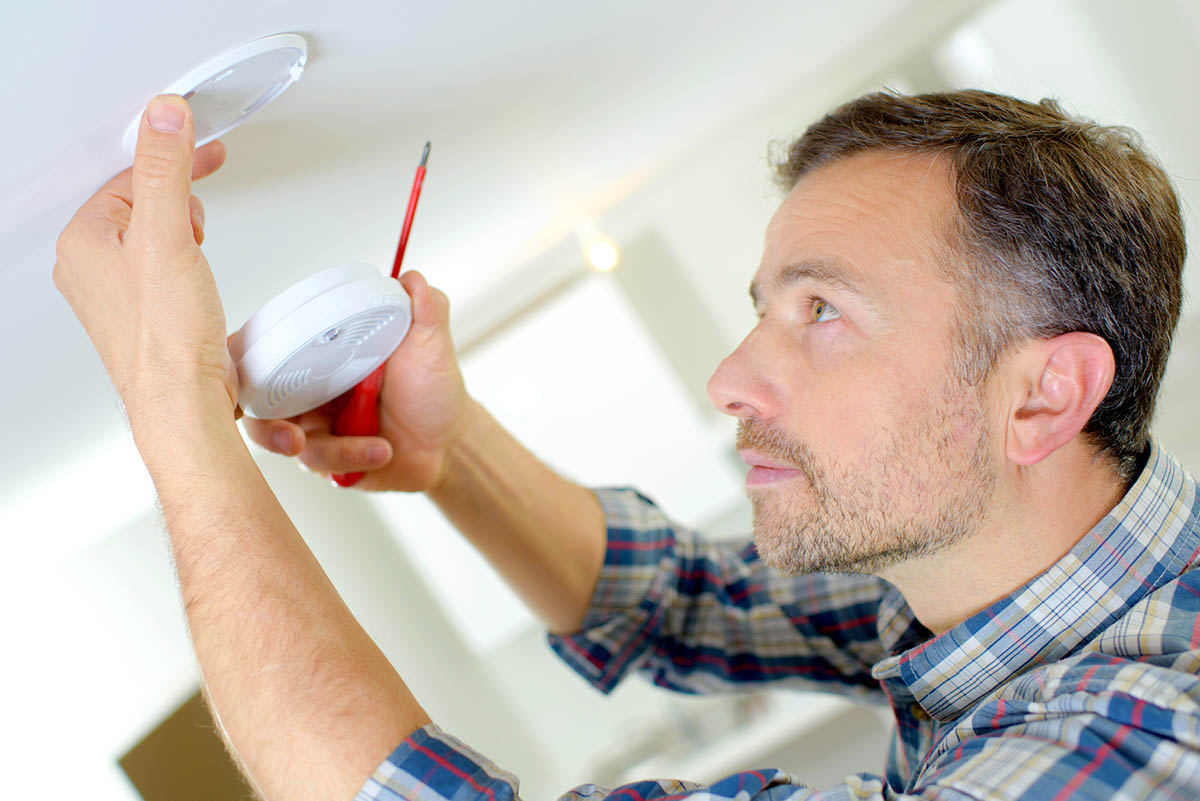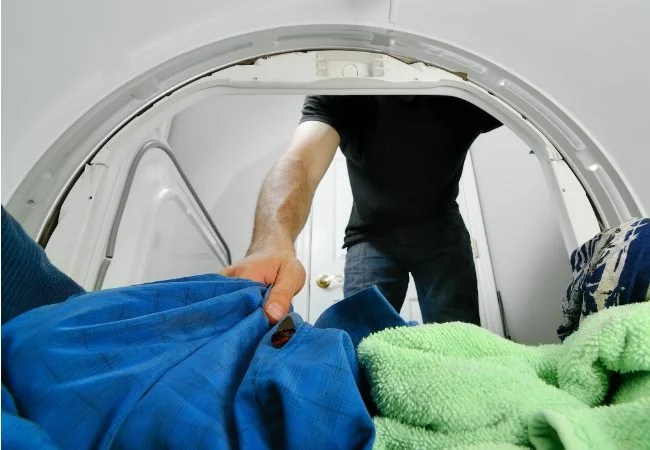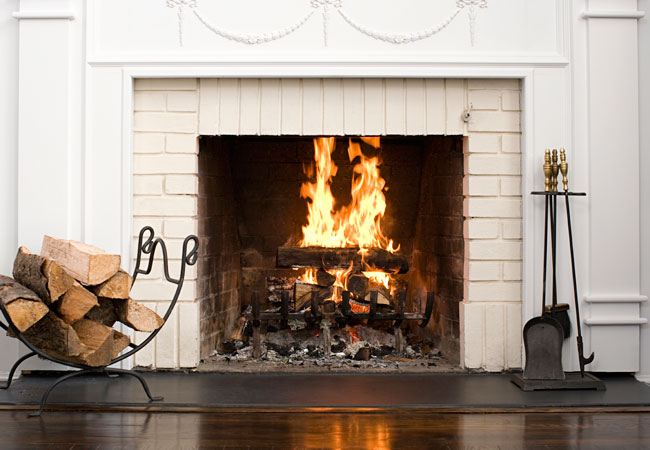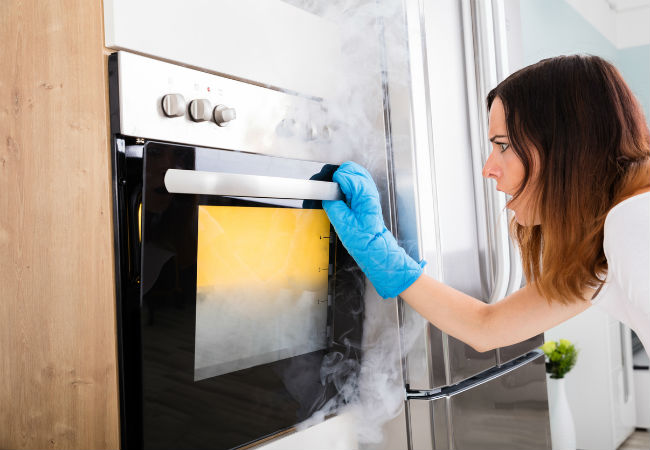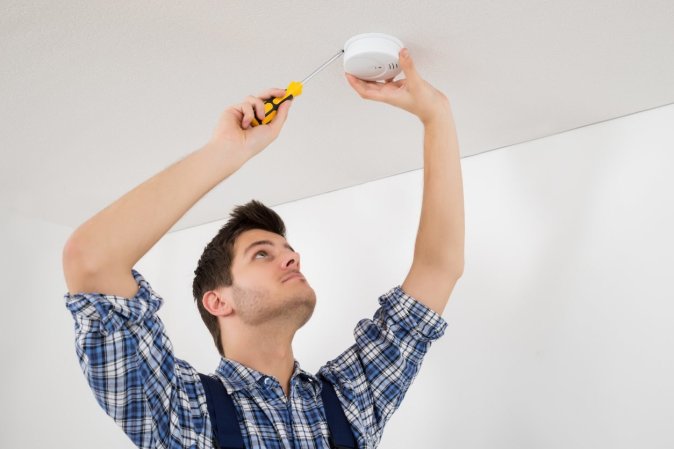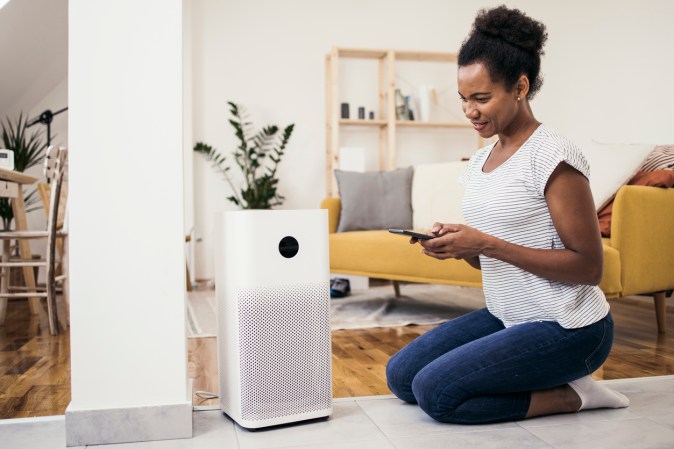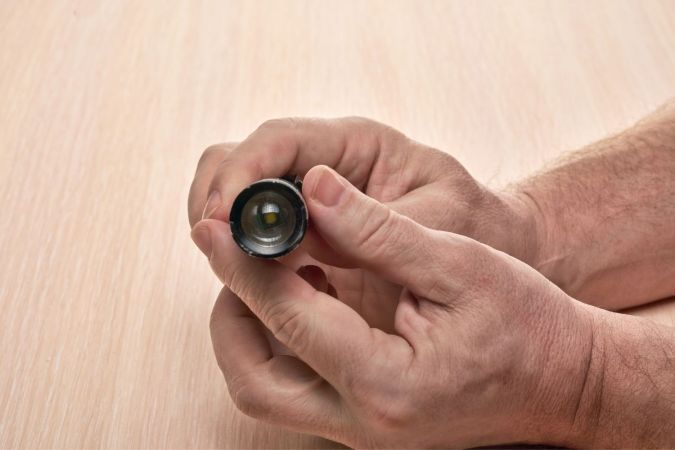We may earn revenue from the products available on this page and participate in affiliate programs. Learn More ›
Q: This past week, one of our home’s smoke detectors has chirped a few times. We weren’t cooking at the time, and cannot determine what is causing the alarm to sound. Can you help? How can we troubleshoot a smoke detector that beeps intermittently?
A: Beeping or chirping smoke detectors are about as annoying as it gets. You might already know that a chirp every 30 to 60 seconds indicates a low battery, so you’ll quickly attend to changing it. This typically solves the problem, whether the alarm runs entirely on batteries or is hardwired with a battery backup.
Sometimes, however, you replace the battery and the smoke detector continues making the same sound. Or, just as maddening, the alarm goes off loudly for no apparent reason. Stay calm and read on for the most likely causes—and fixes—so you can restore peace and keep your home protected.
How to Stop a Smoke Detector From Beeping
The first thing to do when a smoke alarm sounds or starts chirping incessantly is to check that there isn’t actually smoke in the home. Once you’ve determined that to be the case, it’s important to set about silencing the beep. That loud chirping is pretty offputting, and prevents most folks from thinking clearly and calmly. The following steps should explain how to stop a fire alarm from beeping:
- Locate the chirping smoke detector (this is often the most difficult part).
- Set up a step ladder that will allow safe and comfortable access to the detector.
- Press the “Test/Silence” button on the front of the detector.
If the smoke detector keeps beeping, it may be necessary to remove the device altogether until you can figure out what is going on. Here’s how to remove it:
- Firmly grasp the detector and turn it counterclockwise until it snaps loose from the base.
- Open the battery compartment in the back of the device.
- Remove the battery.
- For hardwired devices, use a screwdriver to loosen the screws holding the alarm wires in place and remove them from the device. These are low-voltage lines, but DIYers should still take care not to touch the exposed copper ends together.
Note that this is only a temporary solution. Leaving a smoke detector disabled is unsafe. It’s important to look for a permanent, proper fix for the problem right away.
Troubleshooting a Smoke Detector That Keeps Beeping
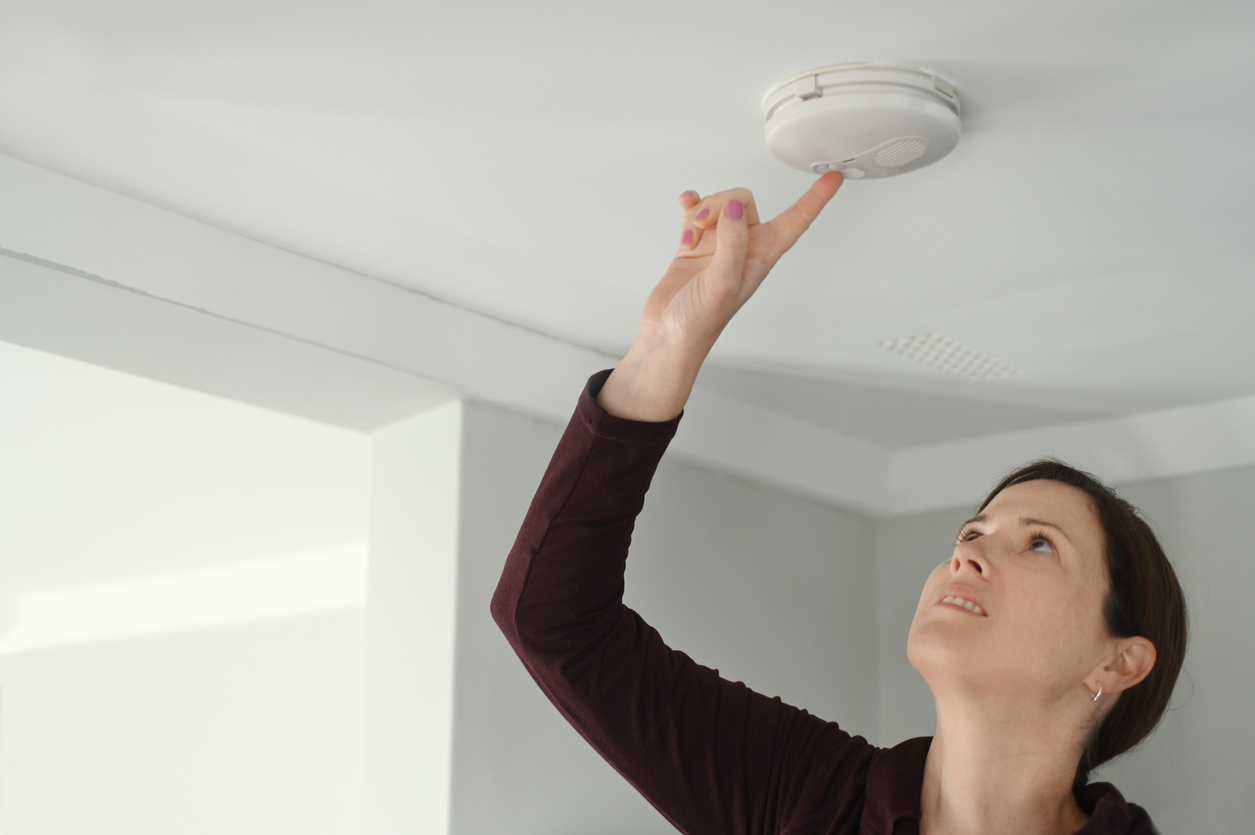
Three out of five home fire deaths occur in properties without working smoke alarms, according to the National Fire Protection Agency (NFPA). The cause could be an electrical fire, a chimney fire, or a number of other terrifying scenarios.
It’s no surprise that the agency recommends a functioning smoke detector in every bedroom, outside every sleeping area, and on every floor of a home, including the basement. If a homeowner is experiencing a fire alarm beeping or chirping irregularly, start troubleshooting immediately. The following are some reasons why your smoke detector is beeping, chirping, or making other unexpected noises.
1. There’s smoke in your home.
There is a chance that there’s smoke within the home and that it could be setting off the smoke detector. Smoke particles from overcooked popcorn or smoke from the oven could be the cause, or there could be a smoldering fire that is more difficult to detect.
Fires that are difficult to locate are typically inside the walls, floors, or ceilings, or start within electrical outlets or devices. Sometimes, running the back of your hand along the surface of the wall and ceiling will reveal where the potential fire is hiding.
Note: If you suspect there’s a fire inside the wall, do not attempt to access and extinguish it. Call the fire department and evacuate everyone from the home.
RELATED: 8 Warning Signs of Dangerously Outdated Electrical Wiring
2. The detector’s batteries may be dead.
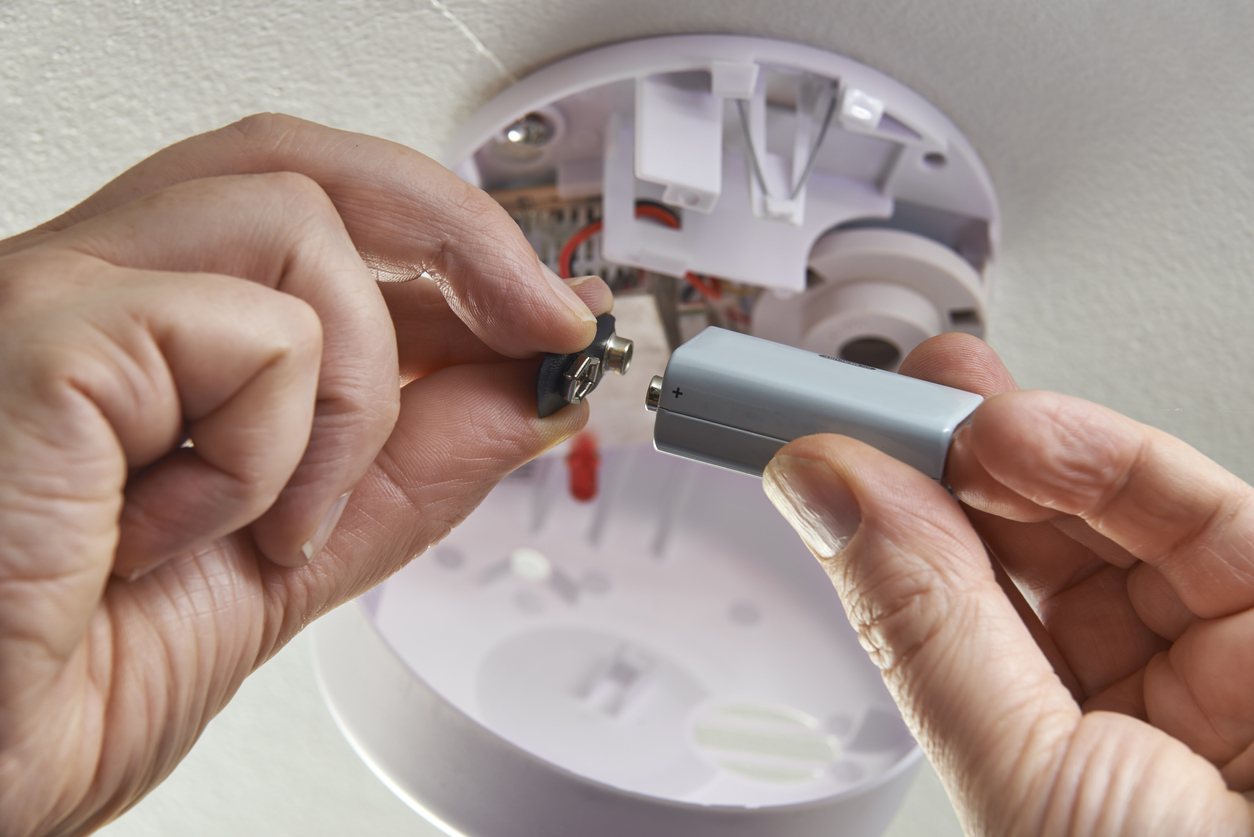
A smoke detector should beep or chirp when the battery begins to lose power. This is a safety net of sorts, since it gives the home’s occupants a heads-up that the battery is weak, but still allows the smoke detector to function properly for around 30 days. The units will let you know that they need a battery change long before the device leaves the home unprotected.
However, electronics can do strange things when their batteries are weak. An actual alarm activation could be the result of a weak battery tricking or confusing the electronics within the smoke detector, causing it to activate an alarm condition. Replacing the batteries may solve the issue altogether.
3. The alarm may need to be replaced.
The smoke detector itself, and not its battery, might require replacement to stop smoke alarm warnings. Most manufacturers design their products to last for about 10 years. After a decade of service, some of the alarm’s components may no longer function properly. While the date printed on the back of the alarm is likely the date of manufacture, not an expiration date, you can still judge the unit’s age by that date.
4. The battery peg or pull tab may need attention.
If you have recently changed the batteries in your alarm but the device keeps making noise, you may have neglected a minor detail. That’s easy to do, since alarm designs differ, and they take different types of batteries. On some units, there’s a small security peg that must be pulled out to open the drawer and remove the battery; this peg must then be pushed back into place once the battery is changed.
On the other hand, if your new smoke detector is a hardwired model that features a 10-year sealed backup battery, chirping may indicate that you did not remove the battery pull tab. This tab must be removed after providing AC power to the alarm for it to operate correctly.
5. The smoke detector’s battery cover is open.
Some hardwired smoke alarms encase a backup battery in a small drawer. When replacing a battery, make sure that it fits exactly within the slot and that the drawer closes completely. If the drawer is not fully closed, the battery may not make contact with the terminals. Similarly, on other models, ensure that the unit’s lid is closed and that it is mounted properly when reinserted onto the ceiling.
6. The battery terminal may be partially obstructed.
When replacing a battery in a smoke alarm, make sure that nothing is obstructing the battery’s connection to the terminals. Corrosion or even a small speck of dust, ash, or pollen can prevent proper functioning. After removing a battery for replacement, vacuum the area carefully to remove any dust or debris and then insert the replacement. If there is visible corrosion, it’s likely that the unit is shot and it’s time to invest in a new one.
7. Temperature fluctuations may be impairing the functioning of the device.
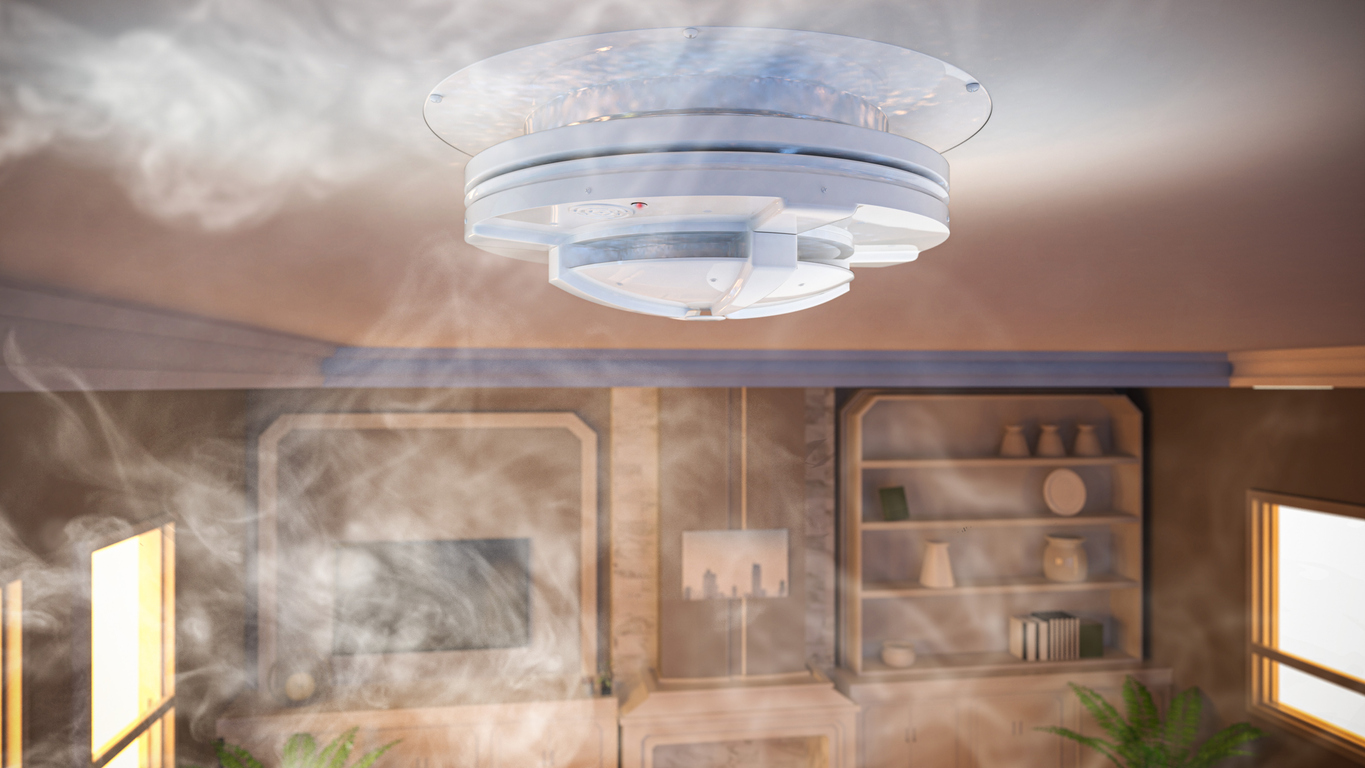
Another common culprit behind smoke detector beeping is a sharp variation in temperature or humidity in the home. A variety of reasons may be to blame:. A smoke alarm in an unheated area of the house (an attic, for instance) can become too cold to reliably deliver an electrical charge during an abrupt decline in temperature.
Other causes may be hot, moist air released from the bathroom after a steamy shower, or heat (not smoke) from cooking in the kitchen oven. To avoid these false alarms, reposition smoke alarms that are in close proximity to the kitchen or bathroom door, or direct hot air away from alarm vents with an exhaust fan.
8. Airborne particles may be interrupting the detector’s light beam.
The small light sensor housed within certain types of smoke detectors can be quite sensitive. That means something as innocuous as a bit of ash, pollen, or dust—blown in through an open window, perhaps—can interrupt the light beam and set off beeping. Consider cleaning the smoke detector using a dry microfiber cloth, a can of compressed air, or your vacuum, following the manufacturer’s instructions.
9. It may not be your smoke detector at all.
It makes sense to check the smoke detector straight away as soon as you hear an ear-piercing beep. But it’s possible the noise isn’t coming from the smoke detector at all, so check other possible culprits. Your carbon monoxide alarm may have gotten unplugged or needs to be replaced, or an aspect of your home security system may need attention. Trace the sound in case the culprit is an alarm clock going off because its alarm button was unintentionally pulled or pushed during routine house cleaning.
10. The sound might be coming from a different smoke detector.
Sometimes, a smoke detector chirping is so quick or the siren is so loud, it may be challenging to pinpoint the location of the right device. So you may be checking the detector near your kitchen when the clamor is emanating from elsewhere in the home. Folks have been known to spend hours fussing with one smoke detector only to discover that the issue was with the unit in, say, the attic right above the alarm they’d been focused on.
11. If you have a smart alarm, it may have overloaded from saved errors.
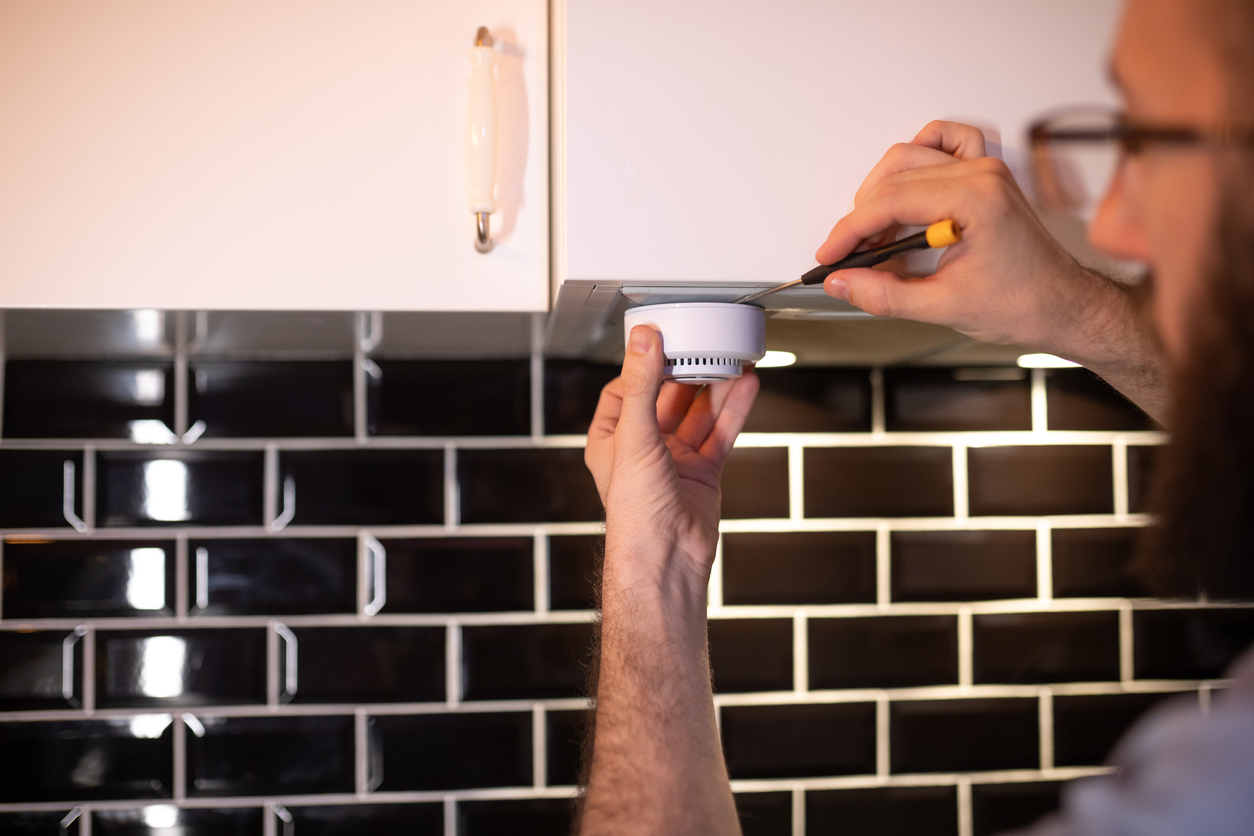
Some modern hardwired smoke detectors are smart devices that adapt to their environment. Trouble is, these advanced models tend to save errors to the processor, and when too many errors add up, they can trigger the alarm. All this means is that the system needs a restart; doing so will delete saved errors and start the device with a clean slate.
12. Your hardwired detector may need a reset.
If your hardwired smoke detector doesn’t respond to the suggestions above, it’s time to visit the electrical panel. Like any hardwired electrical device or system, smoke detectors should be on electrical breakers to prevent damage or unsafe conditions. The issue is that finding the right breaker isn’t always so easy.
In most cases, a fire alarm system will not be on its own circuit. Local fire codes often require the smoke detectors to share a lighting or outlet circuit to prevent owners from shutting them off or not realizing the breaker tripped. If the breakers aren’t marked, experiment by flipping lighting circuits until the smoke detector lights dim or all of the units begin to chirp.
Note: It may be incredibly difficult to find the appropriate breaker, since hardwired systems have battery backups. A pen tester may be necessary .
Once found, toggle the breaker into the off position, wait several minutes, then toggle it again to restore power. If the alarm does not resume its beeping, you’ve most likely solved the problem by resetting the device. To confirm, push and hold (for a few seconds or as long as recommended in the manufacturer’s instructions) the test button on the face of the detector. If the alarm sounds a few times and then goes silent, it’s back to working order.
13. If you have a hardwired smoke detector, the power may have surged.
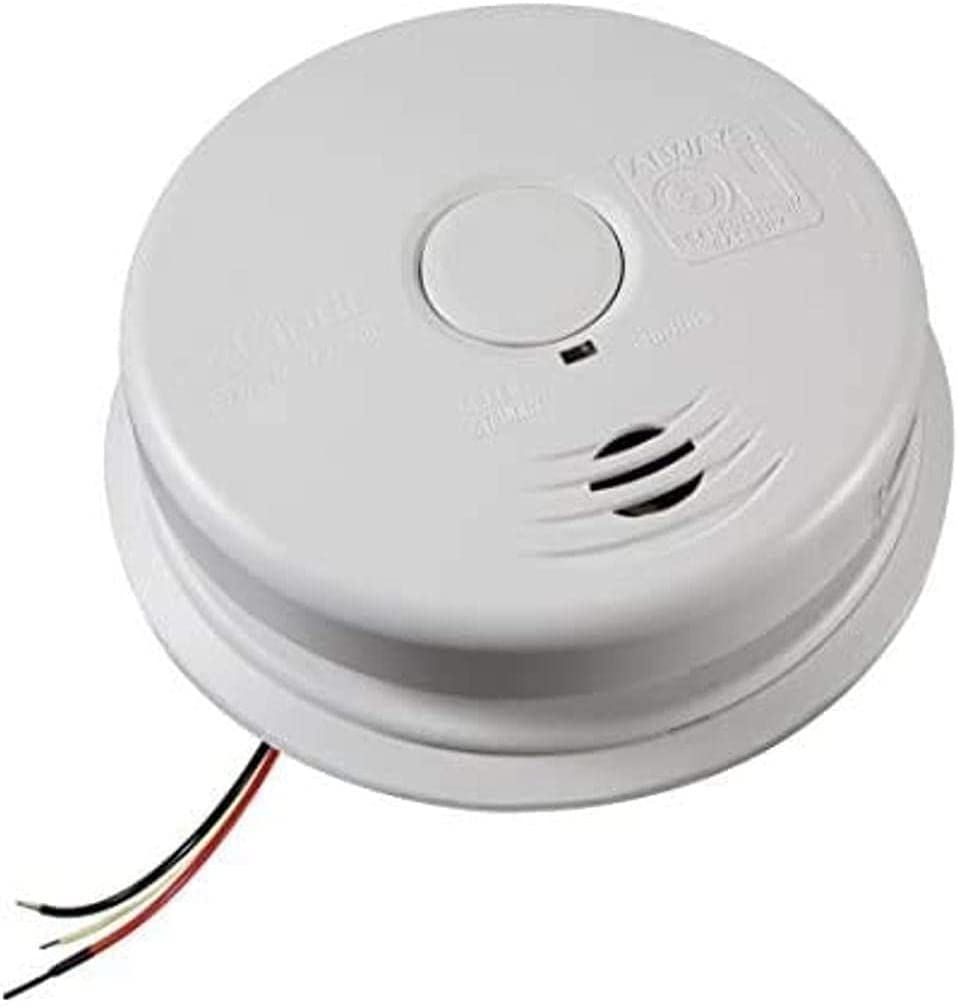
In most cases, a power surge won’t cause a smoke detector problem, at least in terms of the circuit. However, it’s not outside of the realm of possibility that the surge could activate or damage the individual devices.
In these cases, it can be difficult to locate the damaged devices, as one device will typically activate the entire circuit. Start by locating the breaker and shutting it down. Allow the system to rest for a few minutes before flipping the breaker on. If the problem persists, it may be necessary to make a device-by-device search to locate the issue.
Here’s how to test individual hardwired devices:
- Shut the breaker and remove the device from its base.
- If accessible, remove the battery backup.
- Use a screwdriver to remove the wires on the back of the device.
- Twist the wire ends of like colors (black to black, red to red) together. Small wire nuts will help.
- Reactivate the breaker.
If the system stops alarming with that device removed, it’s the culprit. If not, shut the breaker, reinstall the device, and move to the next smoke detector. Don’t forget about those less noticeable and fancy design-inspired smoke detectors—be sure to test them as well.
14. The detector may be in direct sunlight.
Sunlight can affect photoelectric smoke detectors, since these devices have beams of light inside them. They have sensors that activate when too many particles of any type (but particularly smoke particles) enter the device, which will weaken the amount of light on the sensor.
The theory behind sunlight-activating alarm devices works on the same principle. However, rather than the light being blocked by particles, flooding the device with light (such as intense sunlight) can make the beam of light harder to distinguish for the sensor. This is most common on wall-mounted devices in front of east- or west-facing windows.
15. “Silent” mode may have been accidentally activated.
Though it sounds counterintuitive, some smoke detectors will actually chirp when they’re in silent mode. There is probably nothing wrong with the device as it is simply reminding a home’s occupants that for the next 15 minutes or so, the device is out of order.
Accidentally activating this mode is less common than it used to be. Older devices often featured separate test and silence buttons, so accidentally pressing the silence button during testing was extremely common. Modern models have all-in-one buttons that prevent smoke alarm beeping from the silent mode setting.
Generally speaking, the device will stop chirping after 15 minutes.
RELATED: 7 Things That Might Surprise You About Your Home’s Security System
16. The detector may maintain a residual charge from previous batteries.
There are components inside a smoke detector that may retain a charge, especially if the batteries weren’t fully drained when replaced. This can cause the smoke detector to act strangely, possibly activating the device or causing an intermittent chirp.
Retaining a charge is most common in standalone, battery-operated detectors, and the fix is simple:
- Remove the smoke detector from the base.
- Open the battery compartment and remove the battery.
- Press and hold the test button for 30 seconds.
- Place the battery back into the device (or replace it if it’s older).
- Snap the smoke detector back into its base.
FAQs About Chirping Smoke Detectors

If you’re still a bit unclear about chirping or beeping smoke detectors, find further information in the answers to these common questions.
Q. How do you get a smoke alarm to stop chirping?
Smoke alarms chirp to alert the resident to a problem. This is usually an indication that the battery needs replacement. So in many cases, after swapping a new battery into the device, it will stop chirping.
Q. Why does my smoke detector keep beeping even after I change the battery?
Changing the battery is the obvious action to silence a chirping smoke detector. But if the battery is not replaced correctly, if the lid or drawer to the unit isn’t fully closed, or if dirt or corrosion are interfering with the battery’s connection, the device may continue to chirp.
Q. Why is my hardwired smoke detector beeping?
Hardwired smoke detectors (which typically include a backup battery) are subject to similar issues as those that operate on a battery only. However, hardwired units often require resetting after problems are addressed. On most, simply hold the reset button for 15 to 20 seconds to silence the noise.
Q. How long does it take for a smoke detector to stop chirping?
Once you replace the battery or otherwise successfully address the reason for the chirping, the smoke detector should immediately stop making noise. However, if you cannot figure out the problem, don’t disable the unit by taking out the battery. Obtain a new smoke detector as soon as possible to keep your household safe.
Final Thoughts
Smoke detectors save lives, but only if they are functioning and located properly. It’s a good idea to test multiple smoke detectors every time you change your clocks, and clean the devices as well, even if they aren’t chirping. Odds are you’ll sleep more soundly knowing your smoke detectors are in good working order.

